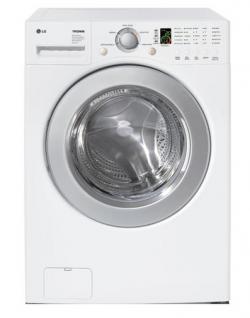
Image Credit: LG Appliances
Amy:
Ladies and Gentlemen…really great news! You can now include washers, dryers and dishwashers in your rehab work for NSP1 and NSP2, and furthermore, they have to be Energy Star labeled.
Is anyone else celebrating? I know there are some celebrations happening in Maricopa County, Arizona! A big “Thank you!” to Ben Chao, the NSP Director for the Housing Authority of Maricopa County, who was instrumental in getting this energy efficient policy guidance issued.
The conditions that have to be met, as per HUD, are:
- NSP funds have rehabilitated or constructed the homes;
- Installation of such appliances is comparable to unassisted homes in the local housing market (see HOME program standards);
- Deed restrictions or covenants ensure that the appliances remain in the home, if appropriate;
- Qualifying appliances meet or exceed Energy Star standards.
This was the talk of every NSP Problem Solving Clinic I went to across the country, and I’m ecstatic that we are getting some quality guidance on this.
Cheers to another win for the green team! 
Cheers to those of you out there fighting to change the way affordable housing is built and rehabbed!
What do you think? What else needs to change?
NOTE: You can find the “Guidance on NSP Eligible Appliance Purchases” by clicking here.
Weekly Newsletter
Get building science and energy efficiency advice, plus special offers, in your inbox.













2 Comments
High Efficiency Standards
The best part about the details of the HUD approval are hidden. "High Efficiency" sets were approved for installation, which are CEE level 2 or 3, much more efficient than basic energy star guidelines. For instance, high efficiency washers and dryers have the following benefits:
Washer benefits:
o22.7% of indoor water use is from the clothes washer
oWater use for average size load is 18-25 gallons of water vs. 40 gallons for a top loading unit
oThis would equal an average savings of 7,000 gallons per year for a family of four
oFaster spin cycle; clothes are 40% dryer out of the washer, reducing drying time
oUses 50% less energy per load than washers meeting Federal guidelines
oAutomatic load size sensors reduce water use
o50% less detergent needed
Dryer benefits:
oMoisture sensor automatically shuts off when dry
o40% reduced drying time
oAmounts to an average of 58% reduction in energy use
oLonger clothes life
oDepartment of Energy Recommended
Reduced burden on low & low-middle income families who would have to purchase on their own.
Response to High Efficiency Standards by Manuel
Thanks for the insight, Manuel. You are right-on with the fact that the inclusion of washers and dryers presents a reduced burden on low-income families who would either have to purchase on their own or find a Laundromat, which is an argument that has been made by so many in our field.
Also highlighted in your comments are the high efficiency recommendations by HUD. These are not mandatory per this policy guidance (only Energy Star is mandatory), but if you would like to go with a higher efficiency option, HUD states you can. Just the fact that these high efficiency options are suggested standards by HUD is evidence that all the hard work everyone in the green public sector has been committed to in the past is paying off!
Thanks again, Manuel for your comments and please contribute again anytime!
Log in or create an account to post a comment.
Sign up Log in